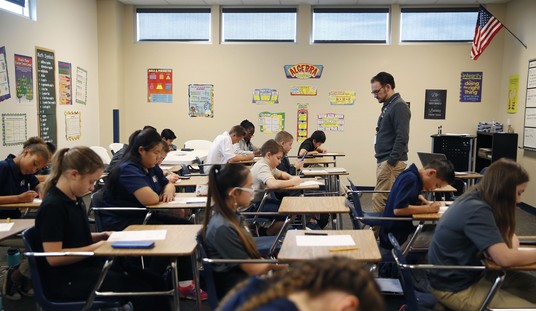When I was in my mid-twenties I developed heart failure on a flight to India. It was caused by viral myocarditis, and I found the whole experience interesting rather than alarming because I was still at an age when I thought I could not possibly die. Neither did it occur to me to request medical assistance: I had some insight into the helplessness of doctors in such situations.
A couple of years later I accompanied a madman on a flight back to his own country. His main symptom was a desire to kill himself by jumping out of high windows: not the ideal airline passenger, you might have thought. In my pocket I had a syringe ready with tranquillizer with which to jab him if he became difficult. It was all arranged very casually, but in the event nothing untoward happened.
We are better organized now, of course, as a paper in a recent edition of the New England Journal of Medicine shows. The authors collected data on the medical emergencies that occurred among roughly 10 percent of airline passengers worldwide between January 2008 and October 2010.
It is often said that flying is the safest means of transportation, and it does not seem to be medically very hazardous either. There was one emergency every 604 flights, and one per 62,500 passengers. Moreover, most of the emergencies turned out to be trivial or minor; only 7.3 percent – that is to say, 875 of 11,920 cases – resulted in diversion of the aircraft. Of course, 875 flights is a lot relative to most people’s lifetime, but it was 875 of 7,198,116 flights.
The most common symptom was fainting or feeling faint, followed by breathlessness and then nausea or vomiting. There were 30 deaths on board and 6 shortly after landing. The age of the oldest passenger to have suffered an emergency in flight was 100 (he didn’t die, though, and lived to fly another day).
The presence of a physician on board (as there was in nearly half of all flights), or at least of one who came forward to give assistance, made it more likely that an aircraft would be diverted to the nearest airport. Oddly enough, the patient was no more likely to be hospitalized on arrival after assistance by a doctor than when there was no doctor on board, suggesting that doctors on board had either cured their patients by the time of landing, or tended to overestimate the seriousness of the cases. Oddly enough, passengers who were assisted by flight attendants were considerably less likely to cause the aircraft to divert or to be hospitalized on arrival. The authors do not try to explain and make no comment on this.
They also do not comment on whether being a passenger on a commercial airline is an independent risk factor for developing an illness. It is well-known that passengers are at increased risk of deep vein thrombosis after flights of more than four hours, but is the risk of death during flight itself greater than expected?
Let us suppose that the average length of flight for the 744,000,000 passengers covered in the paper’s survey was 3 hours, that is to say 2,232,000,000 flight hours, or 93,000,000 flight days, or 254,795 flight years. There were 36 deaths recorded during that time, that is to say one death per 7078 years. Even allowing for the fact that most passengers will be relatively healthy, this seems a high figure, given that the raw death rate of the population would lead you to expect about 1700 deaths in 254,795 years of human life. Perhaps flying is the way to near immortality.
*****
ASK DR. DALRYMPLE…
Do you have a question about health and medicine you’d like to see addressed? Click below to contact PJ Lifestyle.

image courtesy shutterstock / potowizard











Join the conversation as a VIP Member